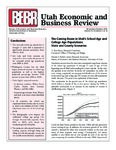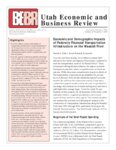TO
| Title | Date | Subject | Description | ||
|---|---|---|---|---|---|
| 1 |
 |
An echoing in-situ combustion oil recovery project in a Utah tar sand | 1982 | in-situ combustion; oil recovery project; Utah tar sand; echoing in-situ; U.S. tar sand resources; reverse combustion process; heterogeneous tar sand reservoir | U.S. tar sand resources contain an estimated 30 billion bbl (4.7 Gm3) of oil in place in about 550 occurrences in 22 states. Over 90% of the known resources are in six large deposits in Utah, each containing from 1 to 16 billion bbl (0.15 to 2.5 Gm3) of oil. 1 Four major tar sand deposits in Alberta... |
| 2 |
 |
An overview of the Chinese UCG program | 2007-08-11 | Coal; China; Underground Coal Gasification; UCG; Two-stage gasification; Chinese UCG program; Energy | Coal is the dominant source of energy in China, but about 50% of the coal resource is left underground unmined. Because of this, the "long-tunnel, large section, two-stage" Underground Coal Gasification (UCG) technology has been put forward, and the UCG model platform has been built. Simulation test... |
| 3 |
 |
Analysis of oil shale and petroleum source rock pyrolysis by triple quadrupole mass spectrometry: Comparisons of gas evolution at the heating rate of 10 °C/min | 1990-10-05 | Kimmeridge; Phosphoria; La Luna; Teistberget; New Albany; Eastern U.S. Devonian; Janusfjellet; Wenzen; Maoming; Fushun; Woodford; Green River; Brotherson; Oil shale; Petroleum; Rock pyrolysis; Gas evolution; Programmed-temperature pyrolysis; Triple-quadrupole mass spectrometry; Mineral matrix; Miner... | Kimmeridge, Phosphoria, La Luna, Teistberget, New Albany, Janusfjellet, Wenzen, Maoming, Fushun, Woodford, and three Green River oil shales were subjected to programmed-temperature pyrolysis at a heating rate of 10 °C/min using triple-quadrupole mass spectrometry as the detection method. Volatile c... |
| 4 |
 |
Association of uranium and other metals with crude oil, asphalt, and petroliferous rock | 1954-10 | uranium; crude oil; asphalt; petroliferous rock | Some crude oil, natural asphalt, and petroliferous rock are appreciably radioactive, but little is known about the actual uranium content and the chemical nature of the uranium compound or compounds in these materials. Semiquantitative spectrographic analyses of the ash of 29 samples of crude oil, 2... |
| 5 |
 |
Biofuels--snake oil for the twenty-first century | 2008-12-01 | Most Americans are painfully aware that our present consumption of petroleum is unsustainable. The United States has less than 5% of the world's population, but consumes 24.4% of the world's petroleum production. Only 8.5% of the world's petroleum production comes from American wells, which necessit... | |
| 6 |
 |
Bitumen deposits of northwest Alabama | 1987 | bitumen deposits; northwest Alabama deposits; bituminous rocks | Bituminous rocks of Mississippian age crop out in northwest Alabama within a 113-km (70-mi) long belt. Bitumen deposits have been confirmed by coreholes to be present in the subsurface for a distance of at least 16-24 km (10-15 mi) south of the outcrop. Geochemical analyses indicate the bitumen to b... |
| 7 |
 |
The bitumen-bearing Paleozoic carbonate trend of northern Alberta | 1987 | Paleozoic carbonate trend; northern Alberta; bitumen; Cretaceous oil sands; Canada; crude oil; nonconventional oil resources | Huge quantities of bitumen are contained within the Devonian and Mississippian carbonate horizons that subcrop beneath the Cretaceous oil sands of northern Alberta. To date, however, a detailed evaluation of the economic potential of this resource has been confined primarily to the Upper Devonian Gr... |
| 8 |
 |
California plio-miocene oils: Evidence of early generation | 1987 | plio-miocene oils; California oil; source rocks; commercial generation; LOM; hydrocarbon concentration; oil quality | Early generation of oil from Monterey and equivalent source rocks may well be the primary controlling factor on oil quality in the coastal basins of California. Commercial generation has occurred at reflectance levels as low as 0.3% R0. The wide range of chemical characteristics of these oils is com... |
| 9 |
 |
Census 2010 - a first look at Utah results | 2011 | Census; 2010; Utah; Demographics; Population; Age; Sex; Race; Ethnicity | Early results from the long-awaited 2010 Census are revealing the outlines of the more detailed portrait that will not be available for at least a couple more years. This essay reviews the top-level population change and geographic distribution results primarily from the redistricting data set.1 We ... |
| 10 |
 |
The Chinese wax mine: A unique oil-impregnated rock deposit | 1975 | Chinese wax mine; oil-impregnated rock deposit; oil; mineral wax; viscous oil | The Chinese Wax mine in Daniels Canyon, Wasatch County, Utah, is a small deposit of black, viscous, waxy oil emplaced in fractured, brecciated Oquirrh Formation (Pennsylvanian-Permian) on the Strawberry Valley (or Charleston) thrust sheet where the thrust has overriden the west margin of the Uinta B... |
| 11 |
 |
Classification of natural bitumen: A physical and chemical approach | 1987 | natural bitumen; Classification of bitumen; physical properties of natural bitumen; chemical properties of natural bitumen; crude oil; natural bitumen; tar sands oil; bitumen | By correlation of various selected physical and chemical properties of heavy crude oils and natural bitumens, an attempt is made to solve classification problems. The criteria used here are, in descending order: viscosity, gravity, H/C atomic ratio, O/C atomic ratio, optical reflectivity; volatiles,... |
| 12 |
 |
The coming boom in Utah's school age and college age populations: state and county scenarios | 2002-09 | Population analysts have for some time anticipated a significant increase in the school age population (5 through 17 years of age) of Utah beginning around 2004 and extending for at least a decade. At this point the question is not whether the boom will materialize, but rather, the exact timing, mag... | |
| 13 |
 |
Compositional and kinetic analysis of oil shale pyrolysis using TGA-MS | 2012-04 | compositional analysis; kinetic analysis; oil shale pyrolysis; TGA-MS; oil shale; western United States; oil production | There are vast resources of oil shale in the western United States. Development of technically and economically effective technologies for the conversion of oil shale to liquid fuels will help provide a long-term and secure source of transportation fuels. Developing good understanding of the decompo... |
| 14 |
 |
Control of geological carbon sequestration in the western United States | 2011-05 | coal; carbon dioxide; electric utilities; carbon sequestration; sequestration; geological sequestration; climate change | In the near future, the use of coal may be legally restricted due to concerns over the effects of its combustion on atmospheric carbon dioxide concentrations. Carbon capture and geologic sequestration offer one method to reduce carbon emissions from coal and other hydrocarbon fuel. While the federal... |
| 15 |
 |
Delineation of gas sands by seismic stratigraphy in the Pericocal area, Orinoco Heavy Oil Belt, Venezuela | 1987 | gas sands; seismic stratigraphy; Pericocal area; Orinoco Heavy Oil Belt; deliniation of gas sands; gas sand bodies | The purpose of this study is to define the extent of gas sand bodies found in the Oficina Formation by well SDZ-79X, in the Pericocal area of the Orinoco Heavy Oil Belt. True amplitude processing was applied to 30 km (19 mi) of seismic survey lines in the vicinity of this well. The processing showed... |
| 16 |
 |
Demographic trends affecting public education in Utah | 2000-11 | Beginning in 2004 and continuing for at least a decade, the school age population (5 to 18 year olds) in Utah will increase significantly. Throughout the 1990s, the school age population in Utah grew more slowly than did the population in general so that its share in the total population declined. T... | |
| 17 |
 |
Detailed kinetic analysis of oil shale pyrolysis TGA data | 2011-03-22 | kinetic analysis; oil shale pyrolysis; TGA data; AIChE; oil shale resourses; western United States; Green River oil shale | There are significant resources of oil shale in the western United States, which if exploited in an environmentally responsible manner would provide secure access to transportation fuels. Understanding the kinetics of kerogen decomposition to oil is critical to designing a viable process. A dataset ... |
| 18 |
 |
Diluent-assisted hot-water processing of tar sands | 1987 | hot water processing; tar sands; diluent-assisted hot-water processing; bitumen viscosity | The influence of diluent addition and temperature on bitumen viscosity of tar sands from nine locations in the U.S.A. and Canada has been investigated. Subsequently, hot-water bitumen-recovery experiments were carried out at temperatures from 33°C to 95°C. Kerosene was added as needed to maintain ... |
| 19 |
 |
Economic and demographic impacts of federally financed transportation infrastructure on the Wasatch Front | 2004-09 | Over the next three decades, $14.4 billion (constant 2004 dollars) of new transit and highway infrastructure is planned to meet the transportation needs of the Wasatch Front.1 These investments will significantly influence the region's economic development potential, relative competitiveness, and la... | |
| 20 |
 |
Effect of ethanol on the chemical structure of the soot extractable material of an ethylene inverse diffusion flame | 2007 | Soot extractable material; Ethylene inversion diffusion flame; Aromatic fused rings; Neat flame; Chloroform-extractable material; Aliphatic component; Incomplete combustion; Fossil fuels; Ethanol; Soot; Emission; Soot particles; Polyaromatic hydrocarbons; Potential carcinogen | The effect of fuel-side ethanol addition on the chemical structure of the soot extractable material generated in an ethylene inverse diffusion flame was evaluated by means of average structural parameters. The results indicate that the ethanol effect on the aromatic components was more pronounced, w... |
| 21 |
 |
Experimental and modeling study of particulate formation in high-pressure diesel-like conditions | 2000 | particulate formation; high-pressure diesel-like conditions; diesel combustion process; tailpipe particulate emissions | The diesel combustion process has been characterized by combined measurements of flame intensity and extinction in the UV-visible range in an optically accessible divided-chamber diesel engine at different air/fuel ratios and constant engine speed, using n-heptane and commercial diesel oil as fuels.... |
| 22 |
 |
Experimental evaluation of the effects of quench rate and quartz surface area on homogeneous mercury oxidation | 2007 | quench rate; quartz surface area; homogeneous mercury oxidation; mercury chemistry | This paper presents a mercury oxidation data set suitable for validation of fundamental kinetic models of mercury chemistry and for mechanism development. Experimental facilities include a mercury reactor fitted with a 300-W, quartz-glass burner and a quartz reaction chamber. While operated with a t... |
| 23 |
 |
Fast-tracking Wasatch Front transit investments: economic and demographic impacts of a 2025 build-out | 2011 | Over the next 30 years, the Wasatch Front will significantly expand its transit network. Plans include the construction of an additional 25 miles of light rail, 76 miles of commuter rail, 227 miles of bus rapid transit, and 29 miles of mountain transportation rail line. These projects will be built ... | |
| 24 |
 |
The fate of char-N at pulverized coal conditions | 2003 | char-N; pulverized coal conditions; pulverized coal; coal char. | The fate of char-N (nitrogen removed from the coal matrix during char oxidation) has been widely studied at fluidized bed conditions. This work extends the study of char-N to pulverized coal conditions. Coal chars from five parent coals were prepared and burned in a laboratory-scale pulverized coal ... |
| 25 |
 |
Federal control of carbon capture and storage | 2011-09 | carbon capture; carbon storage; coal; carbon sequestration | The United States has economically recoverable coal reserves of about 261 billion tons, which is in excess of a 250-year supply based on 2009 consumption rates. However, in the near future, the use of coal may be legally restricted because of concerns over the effects of its combustion on atmospheri... |
